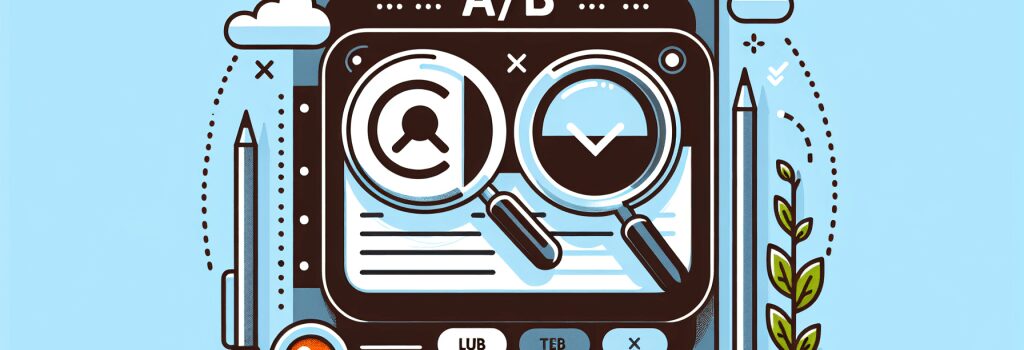A/B Testing: A Critical Tool for UX Improvement

Welcome, aspiring web wizards! Before you grab your virtual wands (mouse and keyboard, in coder’s language), buckle up for a fun-filled journey as we decode the mysteries of A/B testing. Now, you may have heard tales of it being a critical tool for UX (User Experience) improvement, akin to the magical spell that brings your code to life with enhanced user appeal. So, without further ado, let’s dive into the magical realm of A/B testing.
The A/Bs of A/B Testing
What is A/B Testing, you ask? Well, imagine you’re a chef. Would you serve a dish to your customers without tasting it first? Unless you have a secret wish to be chased out of your kitchen, probably not. Much like the intricate flavors of a dish, your user interface might have different appeal to different users. A/B Testing is that magic table salt to your coding recipe that lets you test different versions of your interface, and select the one that users would most likely gobble down with glee.
The Grandeur of Goals
Before you start throwing versions around like you’re in a foam party, hold on! A/B Testing is a planned rave, not a haphazard jumble. Define clear goals like increased clicks, decreased bounce rate or improved conversion rates. Remember, an A/B test without goals is like a wand without magic!
The Allure of Alternatives
Next up, let’s come up to the ‘A’ and ‘B’. These are essentially two versions of the same webpage with different elements, like a headline, button color or image. Much like twins separated at birth in movies, while they may look different on the outside, the inherent content is the same.
Terrific Test and Trouble
Time for some action! Implement the versions online, half of your audience gets A, and the other half gets B. Kind of like distributing birthday cake, but with less mess.
The Revelation of Results
Once the users have pounced upon your versions and devoured them with their clicks and scrolls, it’s time to gather data. Compare the performance against your goals. The version meeting most goals wins. Hurray!
The Fantastic Fixes
Here’s the best part. If none of the versions perform satisfactorily, don’t fret! Web development is an endless magic show. Reiterate, retest, readjust. A/B Testing is all about iterating and evolving for the better. Much like the Phoenix, web designs should rise from their own ashes, more brilliant than before.
Ending Notes:
Remember, young coders, A/B testing is not just a strategy, it’s a philosophy. It fosters a culture of data-driven, user-centered decision-making. So, grab your mugs of coffee or hot chocolate (we don’t judge), roll up your sleeves, and let A/B testing place you firmly on your path to being a wizard web developer!


